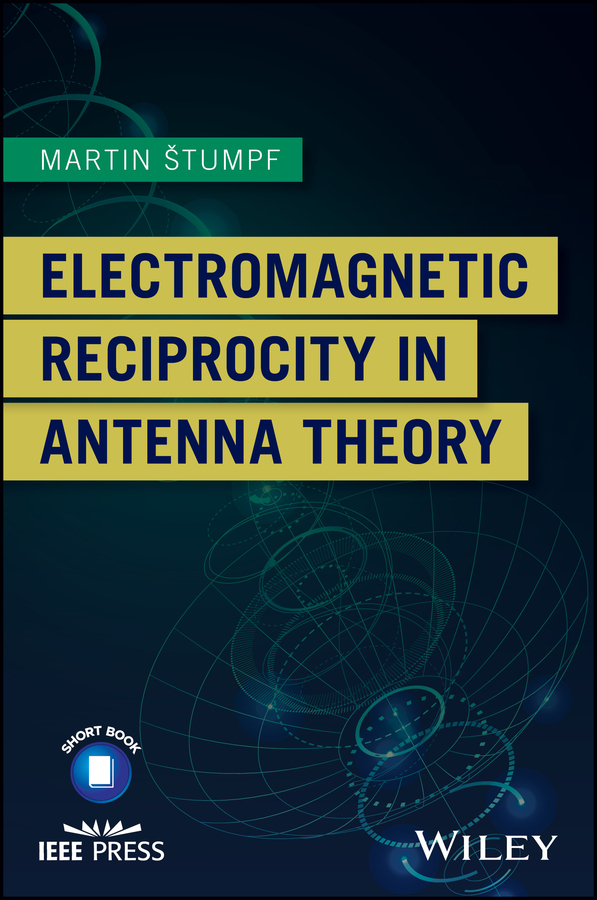Электронная книга: Martin Stumpf «Electromagnetic Reciprocity in Antenna Theory»

|
Provides a self-contained account on applications of electromagnetic reciprocity theorems to multiport antenna systems The reciprocity theorem is among the most intriguing concepts in wave field theory and has become an integral part of almost all standard textbooks on electromagnetic (EM) theory. This book makes use of the theorem to quantitatively describe EM interactions concerning general multiport antenna systems. It covers a general reciprocity-based description of antenna systems, their EM scattering properties, and further related aspects. Beginning with an introduction to the subject, Electromagnetic Reciprocity in Antenna Theory provides readers first with the basic prerequisites before offering coverage of the equivalent multiport circuit antenna representations, EM coupling between multiport antenna systems and their EM interactions with scatterers, accompanied with the corresponding EM compensation theorems. In addition, the text: Presents basic prerequisites including the definition of the notation, integral transformations, and EM reciprocity theorems in their general form Explores multiport antenna forward-scattering theorem, multiport antenna matching theorem and uniqueness theorem Supplements each chapter with a solved illustrative example Electromagnetic Reciprocity in Antenna Theory is an excellent text for EMC and antenna researchers and students of the subject as well. Издательство: "John Wiley&Sons Limited"
ISBN: 9781119466413 электронная книга Купить за 4629.33 руб и скачать на Litres |
Martin Stumpf
Martin Stumpf (* 7. November 1886 in Berlin; † unbekannt) war ein deutscher Politiker (NSDAP).
Leben und Wirken
Nach dem Besuch der Volksschule und des Friedrichsrealymnasiums in Berlin studierte Stumpf Vermessungswesen an den Universitäten Berlin und Bonn. Nach dem Staatsexamen arbeitete er bis zum Ausbruch des Ersten Weltkriegs als Angestellter bei Privatfirmen im In- und Ausland (Türkei) und in der Wasserbauverwaltung.
Am Weltkrieg nahm Stumpf zunächst mit dem Feldartillerie-Regiment 24 teil. Von 1916 bis 1917 wurde er als Instruktionsoffizier in der Türkei eingesetzt. Das Ende des Krieges erlebte er als Batterieführer mit dem Feldartillerie-Regiment 51 an der Westfront. Im Krieg wurde Stumpf mit beiden Klassen des Eisernen Kreuzes, dem Türkischen Eisernen Halbmond und dem Verwundetenabzeichen ausgezeichnet.
Während der bürgerkriegsähnlichen ersten Monate nach dem Krieg gehörte Stumpf dem Regiment Reinhardt in Berlin an. Im März 1920 nahm er am Kapp-Putsch teil. Seinen Lebensunterhalt verdiente er 1919/20 als selbstständiger Landvermesser in Berlin. Anschließend war er bis 1925 als Siedlungsdirektor bei der Kreissiedlunggesellschaft Sagan tätig. Danach ließ er sich wieder als Landvermesser in Sorau nieder.
Im Januar 1923 trat Stumpf in die Nationalsozialistische Deutsche Arbeiterpartei (NSDAP) ein. 1928 wurde er Ortsgruppenleiter der NSDAP in Sorau und 1929 Bezirksleiter der NSDAP in Sorau-Forst. In den Jahren 1930 bis 1933 gehörte Stumpf der Stadtverordnetenversammlung in Sorau an.
Von März 1933 bis Mai 1938 saß Stumpf als Abgeordneter der NSDAP im deutschen Reichstag, in dem er den Wahlkreis 5 (Frankfurt an der Oder; März 1933 bis November 1933 und März 1936 bis April 1938) beziehungsweise 4 (Potsdam I; November 1933 bis März 1936) vertrat. Während seiner Abgeordnetenzeit stimmte Stumpf für das von der Regierung Hitler im März 1933 eingebrachte Ermächtigungsgesetz, das die juristische Grundlage für die Errichtung der NS-Diktatur bildete.
Von März 1933 bis Juli 1934 amtierte Stumpf als kommissarischer Bürgermeister von Sorau und Kreisleiter des Kreises Sorau. Später wurde er Gauinspekteur im Gau Kurmark, bevor er zum Landrat des Kreises Sorau ernannt wurde.
Literatur
- Erich Stockhorst: 5000 Köpfe – Wer war was im Dritten Reich. Arndt, Kiel 2000, ISBN 3-88741-116-1.
Weblinks
Источник: Martin Stumpf
Другие книги схожей тематики:
| Автор | Книга | Описание | Год | Цена | Тип книги |
|---|---|---|---|---|---|
| Martin Stumpf | Electromagnetic Reciprocity in Antenna Theory | Provides a self-contained account on applications of electromagnetic reciprocity theorems to multiport antenna systems The reciprocity theorem is among the most intriguing concepts in wave field… — John Wiley&Sons Limited, электронная книга Подробнее... | 4629.33 | электронная книга |
См. также в других словарях:
Antenna (radio) — Whip antenna on car … Wikipedia
electromagnetic radiation — Physics. radiation consisting of electromagnetic waves, including radio waves, infrared, visible light, ultraviolet, x rays, and gamma rays. [1950 55] * * * Energy propagated through free space or through a material medium in the form of… … Universalium
Reciprocity (electromagnetism) — This page is about reciprocity theorems in classical electromagnetism. See also Reciprocity (mathematics) for unrelated reciprocity theorems, and Reciprocity for more general usages of the term. In classical electromagnetism, reciprocity refers… … Wikipedia
Radiation pattern — Three dimensional antenna radiation patterns. The radial distance from the origin in any direction represents the strength of radiation emitted in that direction. The top shows the directive pattern of a horn antenna, the bottom shows the… … Wikipedia
IEEE Heinrich Hertz Medal — The IEEE Heinrich Hertz Medal is a science award presented by the Institute of Electrical and Electronics Engineers for outstanding achievements in the field of electromagnetic waves. The medal is named in honour of German physicist Heinrich… … Wikipedia
Electronic engineering — is a discipline dealing with the behavior and effects of electrons (as in electron tubes and transistors) and with electronic devices, systems, or equipment.The term now also covers a large part of electrical engineering degree courses as studied … Wikipedia
